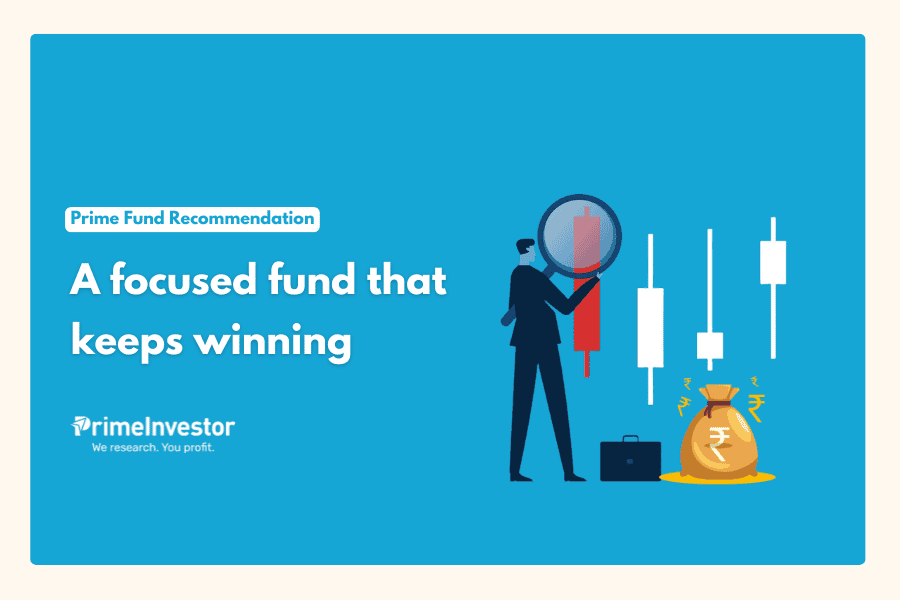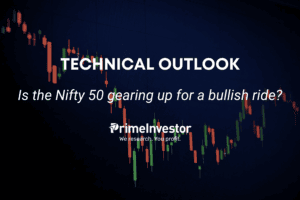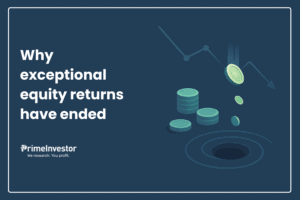A high-concentration strategy is often seen as risky, as funds following it can swing from the top quartile to the bottom with changing market conditions. However, ICICI Pru Focused Equity has consistently performed well in both rising and falling markets, generating solid alpha over its benchmark and category. Focused funds are also a good alternative to small-cap or mid-cap funds to ride a market rebound.

This fund is part of our Prime Funds recommendation list, under the Equity – Moderate category. Let’s explore why this fund is worth your money.
What are focused funds?
Focused funds, like flexi-cap funds, can invest across market caps and must allocate at least 65% to domestic equities. The key difference is that focused funds own concentrated exposure to a maximum of 30 stocks, whereas flexi-cap funds have no such limit. Most flexi-cap funds hold 60 or more stocks.
Fund management
ICICI Pru Focused Equity Fund (IPru Focused Equity) is currently managed by Vaibhav Dusad and Sharmila D’Mello since mid-2022.
After the recent market correction, the large-cap space offers better risk-reward than the small or mid-cap spaces. This fund’s portfolio has a large-cap tilt. As of December 2024, it holds 29 stocks with the top 5 stocks accounting for 33% of assets and the top 10 stocks making up 51%. This is in line with the concentration levels of this category.
The fund’s portfolio turnover ratio is 86%, meaning it has churned 86% of its holdings in a year. This is slightly higher than the category average of 78%. It follows a growth-oriented approach, as indicated by its price-to-earnings (P/E) ratio of 28.8 and price-to-book (P/B) ratio of 4.2—both slightly higher than the Nifty 500’s P/E of 25.6 and P/B of 3.7.
In terms of sector allocation, the fund invests 27% in Banking & Financial Services, 16% in Technology, and 13% in Consumer Discretionary.
Why invest in this fund
IPru Focused Equity scores very well on consistent performance
Performance – Rolling Returns
IPru Focused Equity has demonstrated impressive performance, consistently outperforming the Nifty 500 TRI nearly all the time on a rolling 1-year and 3-year basis; the Nifty 500 is quite a stiff benchmark given the fund’s largecap tilt. IPru Focused Equity also beat the category averages of both the flexicap and the focused categories across one-year and three-year rolling returns. The tables below show the comparative performance.
The fund has delivered better average rolling returns compared to the index and category. Its outperformance has particularly improved in the post-Covid period.
Performance in Bull and Bear Markets
To further evaluate the fund’s resilience, we analyzed its performance across three bear markets and two bull markets seen in recent years.
Although focused funds carry higher concentration risk, leading to steeper falls (e.g., a 35% drop in the Covid market crash for the category vs. 31.5% for flexi-cap funds), IPru Focused Equity limited its losses to 30.6%, outperforming both its index and category. The fund has continued to maintain better downside protection in subsequent bear markets, including the ongoing correction too as the table shows.
The raging bull market started at the Covid bottom, and has seen a rising tide lifting all the boats. The Nifty 500 index emerged as a winner in this period. However, IPru Focused Equity still managed to beat both the Focused, and Flexicap category averages. It also did better than the largecap Nifty 100 index’s 77.7%, given its large-cap tilt.
In the relatively moderate up market seen starting mid 2022, the fund has once again come at the top beating both the index and the category averages by a wide margin
Active management that worked!
In 2024, the fund maintained an average large-cap allocation of 70%, compared to 62% for the focused funds category. Its mid-cap allocation of 25% was also above the category average of 19%. However, the fund barely invested in small caps, whereas the category average stood at 13%.
This makes its outperformance even more impressive. Despite a higher large-cap exposure, (large-caps underperformed mid- and small-caps in recent years), the fund delivered superior returns through concentrated stock selection. This reflects its ability to stay true to its strategy and make it work.
A deeper look into the recent changes in the fund portfolio reveals that it has been increasing its large-cap allocation steadily throughout the past year, starting with around 65% in January 2024 and ending with 75% in December 2024. This has certainly helped with containing downsides when the market turned negative towards the end of the year.
The fund has also made a decisive move to trim allocation to capital goods at the first half of 2024, which helped it limit the impact of the carnage in capital goods seen in the second half. The fund started with allocation to capital goods at more than 11% and ended with less than 6%.
The biggest increase it made is in the banking and financial services (BFSI) sector with allocation rising from 19% to 30% in the year 2024. Within BFSI, the fund started betting on the long stagnating giant HDFC Bank from April 2024, where it entered the stock for the first time in 2024 with a less than 2% allocation. It has been adding to this position and closed the year with more than 7% allocation.
BFSI stocks and HDFC Bank in particular have been the slow movers of the recent bull market. But they have contained downside very well in the recent bear phase. Given that large banks offer a rare pocket of value in this market, this outperformance is likely to gain pace.
While we can't predict long-term performance solely based on the current portfolio—especially given the fund's high turnover ratio—its resilience across market cycles and proven portfolio management offer confidence.
Fund Expenses: The fund’s direct plan has an expense ratio of 0.59%, which is reasonable, and less than the category average of 0.82%. Its regular plan has an expense ratio of 1.74%, essentially giving 1.15% extra returns per year for choosing direct over the regular.
Fund Taxation: Belonging to the equity category, this fund is subject to 20% capital gains on short term (less than 1 year) capital gains. The long term (1 year or more) capital gains will be taxed at 12.5% with gains upto Rs.1.25 lakh exempted.
Risks & Suitability
With its broad investment mandate and large-cap bent, this fund is suitable for any investor with a long-term horizon —no timing is required to enter. An investment horizon of 5–7 years is recommended. Given its growth bias, this fund pairs well with a value-style fund to bring style diversification in your portfolio.
As a focused fund, it carries higher risk than flexicap funds but lower risk than small or mid-cap funds. Focused funds can also see sudden swings in performance, so we recommend monitoring quarterly reviews to get alerts on any significant changes in the fund's strategy or performance.






10 thoughts on “Prime Fund Recommendation: A focused fund that keeps winning”
When the downside protection for Flexicap and this focussed fund seem to be off by 1-2% which scenario will the focussed fund outperform a normal flexicap.
Hello,
There are no fixed rules to determine when a focused fund will outperform a flexicap fund. In general, since focused funds take more concentrated bets, their performance is likely to deviate more—positively or negatively—compared to flexicap funds.
Thanks
Folks having HDFC Flexicap need not go for HDFC Focused 30 due to more portfolio overlap.
Yes. Even I am curious.. Not only this fund, the readymade prime Funds have 3 star rated funds too even though there are 5 star rated funds available in that respective category.
May I know the rationale behind choosing such funds in that list.
Hello,
We have explained why ratings need not translate to calls in the below two articles.
Mutual fund ratings are not a recommendation to buy or sell
The problem with MF platforms – PrimeInvestor
Please see reply to an earlier comment also for reasons regarding this particular fund or Prime Funds in general.
Hope that clarifies.
Thanks
HDFC Focused 30 Fund is rated better than ICICI Prudential Focused Equity Fund based on PI rating. Can i know why HDFC Focused 30 Fund didn’t make it to the list of Conservative ones.
Hello Sir,
HDFC Focused 30 Fund has a Buy call. Ratings are a more quantitative exercise, while our calls and Prime fund additions weigh qualitative aspects and style diversification. Not all funds with a Buy call or top ratings will feature in Prime Funds. We already have HDFC Flexicap fund in the Equity – Moderate category with a value tilt. HDFC Focused 30 has a 70% portfolio overlap with HDFC Flexicap and it also has a more value-based approach. It also has a comparatively more smallcap allocation than the ICICI fund, so we chose the ICICI fund.
Hope that clarifies.
Thanks
Thanks Bipin, I was about to ask this question about HDFC Focused, you have already given a clear answer. Two more questions, 1. if I want to keep focused fund in my portfolio, can I go for both Invesco and IPru? I have already Invesco based on previous PI recommendation (high risk turnarounds)?
2. If I have loss in a small cap fund, is it ok to book loss and shift to this focused fund which may be better perform while markets rebound? Thanks in advance.
Hello,
To answer your questions:
You may invest in both, but be aware that although both fall under the same SEBI-defined category, their risk levels differ significantly. As classified in Prime Funds, ICICI Pru Focused is a moderate-risk fund, while Invesco India Focused is a high-risk fund. By nature, changes in recommendations are more likely in the High Risk Turnaround category than in the Equity – Moderate category. Keep this in mind.
Small-cap funds are best held for at least 5 to 7 years. If you started investing in a small-cap fund with that horizon, are in good-performing funds (see Prime calls on the fund), can tolerate the high volatility of small caps, and have limited your high-risk equity exposure (such as small caps) to 20-25%, you can continue your investments. It’s best not to keep changing allocations based on market movement – this needs to be set only by your risk & horizon. If you are over-invested in smallcap, then you may consider shifting to ICICI Pru Focused.
For a long-term portfolio of 7 years or more, it’s best to decide on a percentage allocation of high-risk categories you’re comfortable with and review it periodically (e.g., once a year). Rebalance when needed. For e.g. if small caps rally and their portfolio allocation rises from 10% to 15%, sell part of the holdings to bring it back to 10%. This approach reduces transactions and taxes compared to completely moving assets across categories.
Thanks
Many thanks Bipin,
Comments are closed.